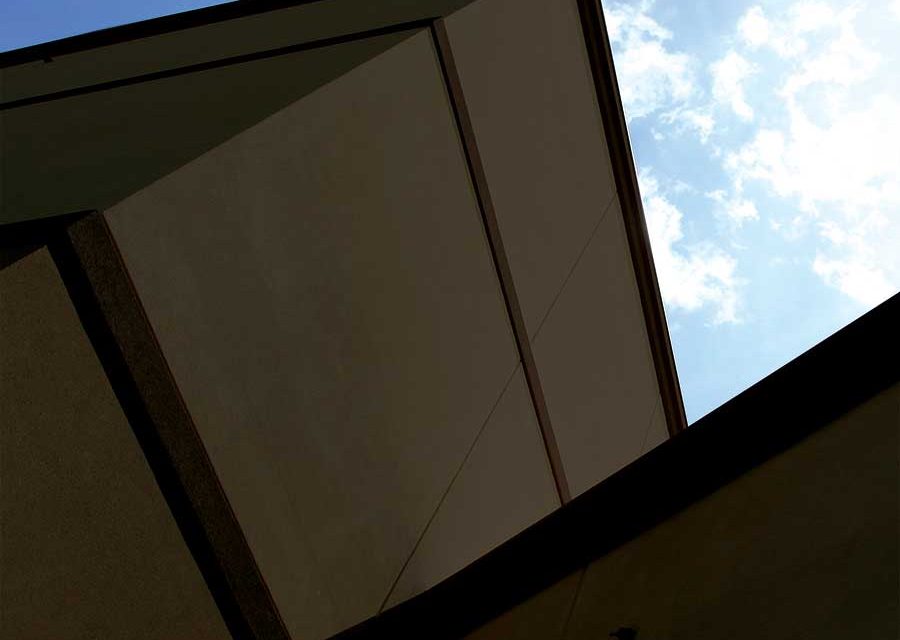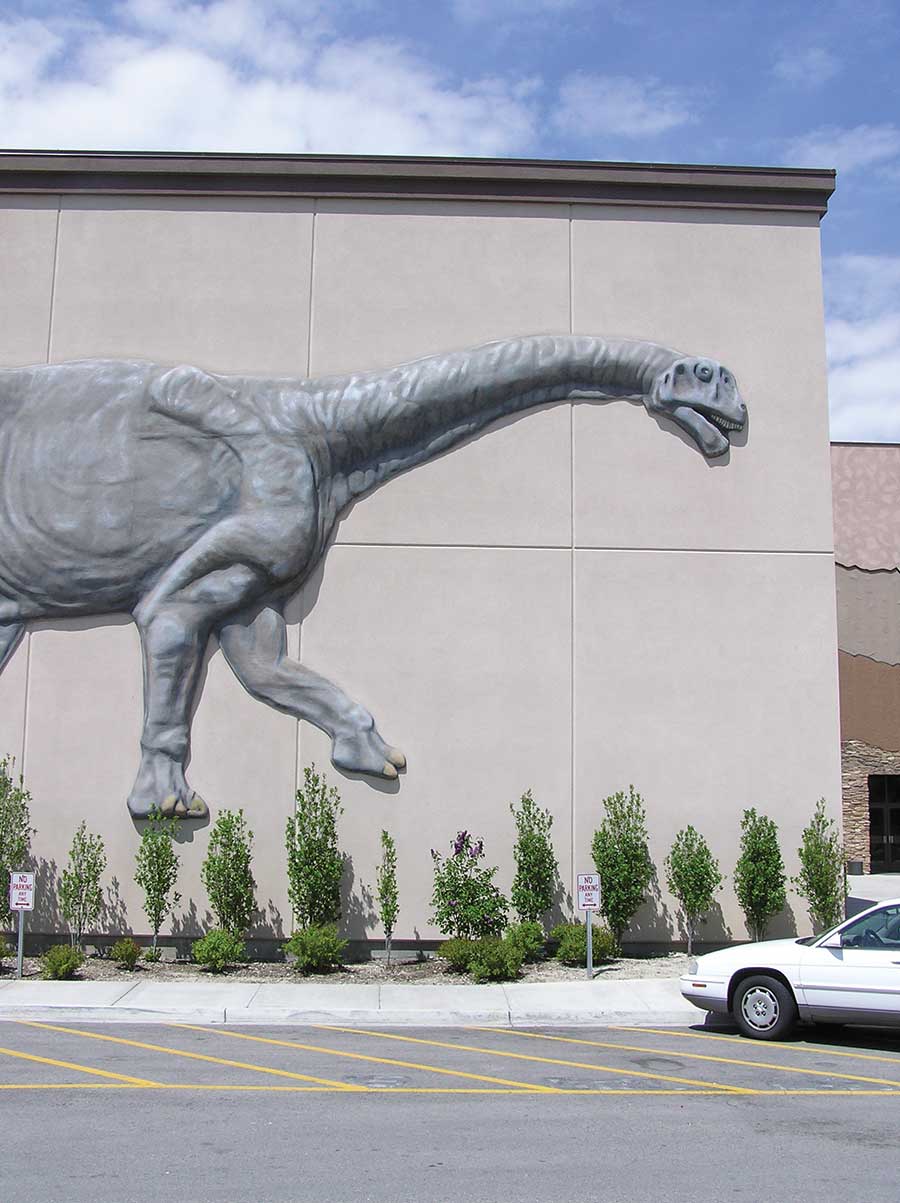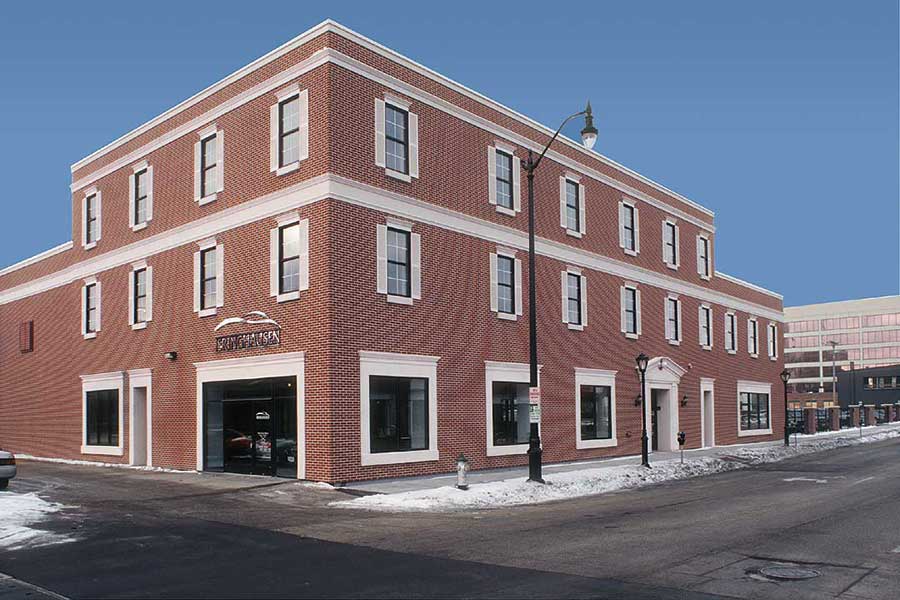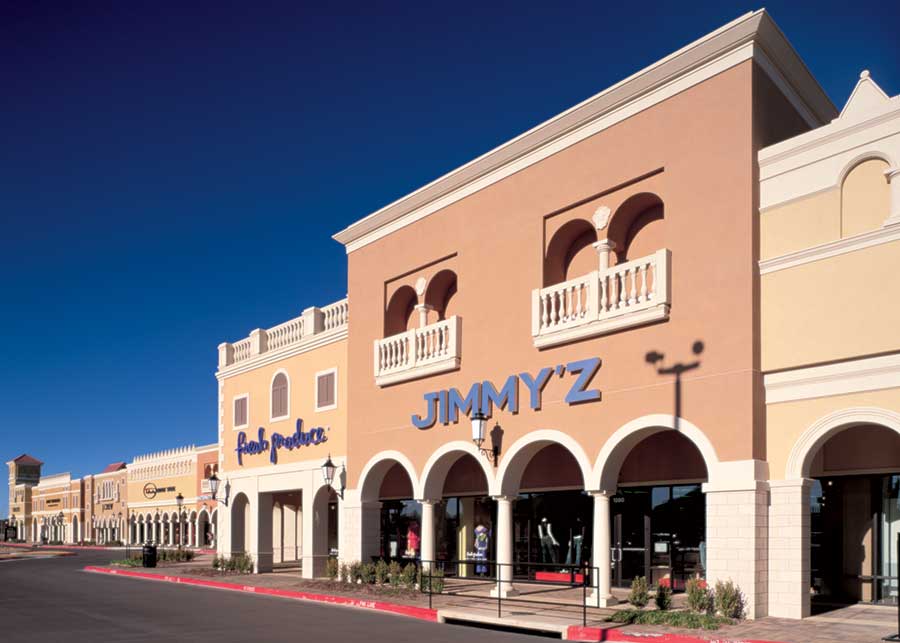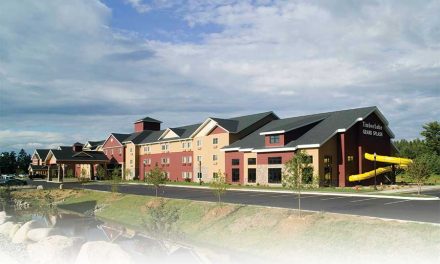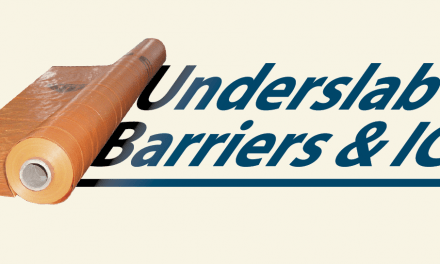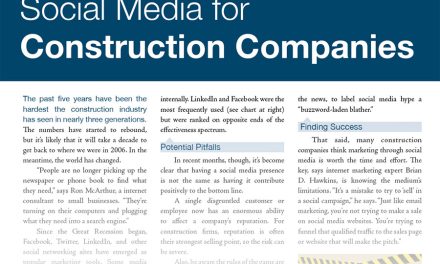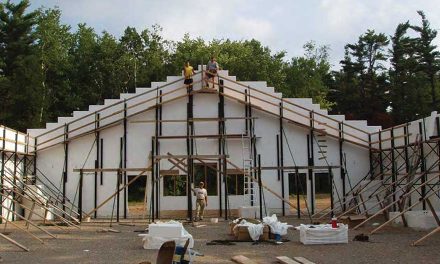Commercial construction is by far the fastest growing sector of the ICF industry. Analysts estimate commercial ICF use is growing two or three times more quickly than the rest of the industry, and will continue to do so for the foreseeable future.
ICFs will accept nearly any finish desirable, including brick, manufactured stone, and cement or vinyl siding. But by far the most popular exterior finish is the “acrylic stucco” more properly called Textured Acrylic Finish Systems (TAFS) or Textured Acrylic Surfacing Systems (TASS).
TAFS offer the architect, builder, and owner the same advantages ICFs do. Both are durable, energy-efficient, and economical. They are also simple to use, widely available, and may shorten construction timetables.
Because of these advantages, TAFS have been used on virtually every type of commercial project imaginable: retail centers, low-rise office buildings, hospitals, universities, resorts, apartment complexes, churches, and even large high rises.
Design Advantages
The variety of colors and textures available with TAFS is vast. “If you ever run through our catalogs, you’ll see that we can achieve any look you can possibly think of,” says Derick Wiaderski, senior staff architect for Dryvit Systems. “TAFS can be finished to resemble granite, brick, limestone, traditional stucco, even aged Italian plaster.”
“We do color matching as well. If you send in a chip, we can match it at the factory and send you the product, premixed and ready-to-go, with no variation in color,” he says.
Kent Stumpe, director of marketing communications at Degussa Wall Systems and member of the ICFA’s board of directors, lists the reasons TAFS are a perfect match for ICFs. “Color selection, variety of textures, integral designs, aesthetics that are economically attainable, and it complements other claddings.”
One of the most unique advantages of TAFS is that it can accommodate all sorts of integral designs. Shawn Kashou, lead architect at GreenTech, says, “You can make any shape in the foam, any thing you can do with stucco, but it’s a stronger material, and it’s easier to use.”
The bas-relief dinosaurs on the outside of the Museum of Ancient Life near Salt Lake City, Utah, are an extreme example. A more common example are the built-up cornerstones, or quoins, on light commercial structures.
Construction Advantages
In addition to design flexibility, the coating system offers jobsite advantages as well.
TAFS is perhaps the easiest cladding to apply to an ICF wall. It is self-leveling, self gauging, and adheres readily to the ICF.
“Basically, you’re just troweling a finish over the existing veneer,” says Wiaderski. “It’s the same as an EIFS application but the foam is already in place. With many of the other choices out there, there is much more field work that needs to be taken into consideration.”
That ease of application translates into higher production rates for crews. “Experienced and organized crews reach
high production rates,” confirms Stumpe. “It’s possible to apply base coat one day and finish the wall the next.”
And if the wall features unusual details, such as the integral designs discussed earlier, those advantages become even more marked. “Nothing else gets close to the economy of adding acrylic coated shapes and detailing,” says Stumpe.
Maintenance Advantages
Even after the building is completed, a TAFS exterior will provide benefits for years to come. “There’s an element of reduced maintenance because it’s a permanent finish,” says Mike Meierer at Grailcoat. “It’s a long-lasting breathable, waterproof, flexible coating.”
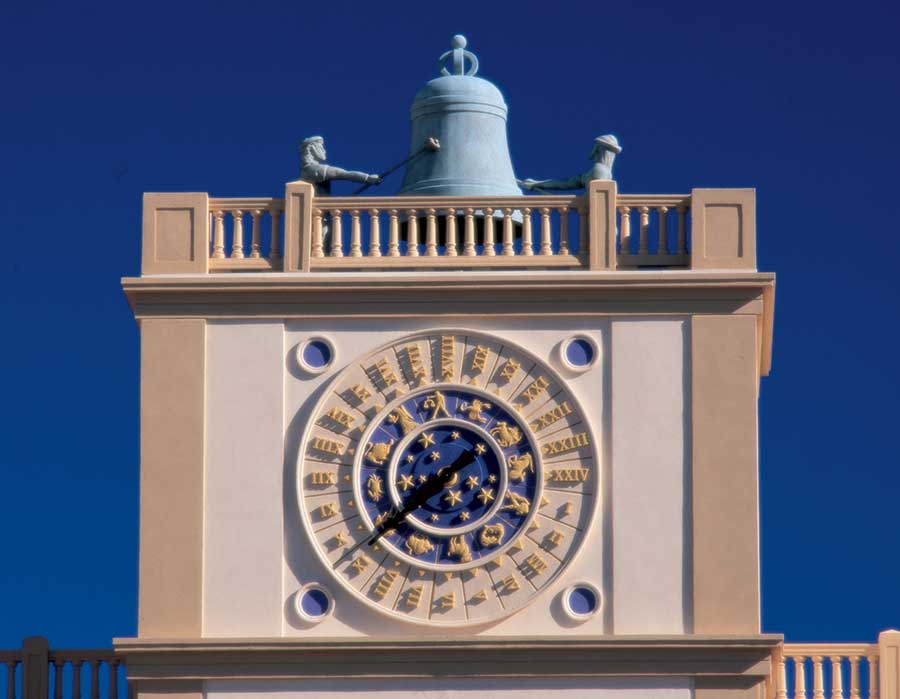
Textured acrylic finishes are durable, easy to apply, and remarkably adaptable. Acrylic finishes can also imitate granite, brick, limestone, or traditional stucco.
Meierer says, “Our product was used on the World Trade Center in Los Angeles when it was built in 1972, and there are no cracks after more than 30 years.” He admits that the building has been painted, but other projects and other brands of TAFS finishes can boast of similar longevity.
One of the reasons the finish is so crack resistant is because its acrylic composition keeps it flexible even at low temperatures. Also, the EPS foam doesn’t move with temperature changes, and helps insulate the finish from thermal shock.
“You could apply 39,000 sq. ft of TAFS without an expansion joint because it just doesn’t expand,” says Dean Seibert.
For a highly impact-resistant finish, consider using a heavyweight mesh on first-story walls. Degussa’s high-impact and ultra high-impact mesh provides protection from abuse in excess of 200 inch-pounds of force.
PermaCrete claims to have a compressive strength of over 6,000 psi, and is ICC approved for both vertical and horizontal finishes.
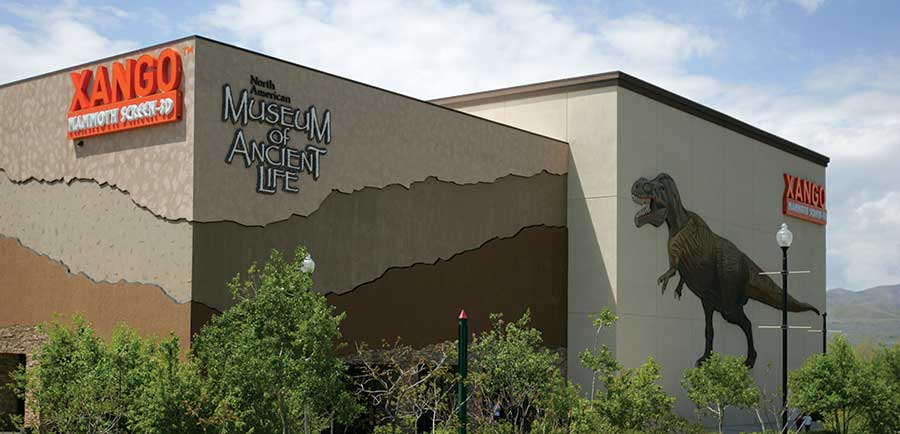
This dinosaur museum, built out of ICFs, highlights the flexibility of acrylic finishes. The building entrance uses a variety of colors and textures to simulate the layers in the earth’s crust.
Also, primers can improve durability. They reduce the possibility of efflorescence, and alleviate “shadowing,” slight changes in the color of the finish due to dry times. Primers, like the finish, are available in any color.
Environmental Advantages
TAFS is an excellent choice for builders and designers concerned about energy efficiency and sustainability. It can reduce energy costs and will contribute to LEED certification.
Here’s why: For TAFS to work, the foam substrate must be exceptionally
tight. The entire exterior must be covered in EPS, including any framed portions of
the building, and all gaps larger than 1/8” must be filled. This creates what Stumpe calls a “monolithic blanket of insulation.” The acrylic base coat finish further reduces
air infiltration.
Practical Consideration
With all the installation and performance advantages TAFS offer, the finished look of the building is paramount.
Whether the final look is one of brick, stone, plaster, or stucco, the color and texture of the finish should match the style of the building.
Stumpe says designers and building owners should be aware that dark-colored finishes contain more pigment, and will fade more noticeably than lighter shades. TASS manufacturers are also careful to alert designers that dark colors reflect less light and can contribute to heat build up on and in the wall that can melt the underlying
EPS insulation.
Kashou, the GreenTech architect, says, “The scale of the building should really determine the finish. If the finish will usually be seen from a distance, use a coarse finish. If the finish will be seen up close, use something smoother, like a sponge float finish.”
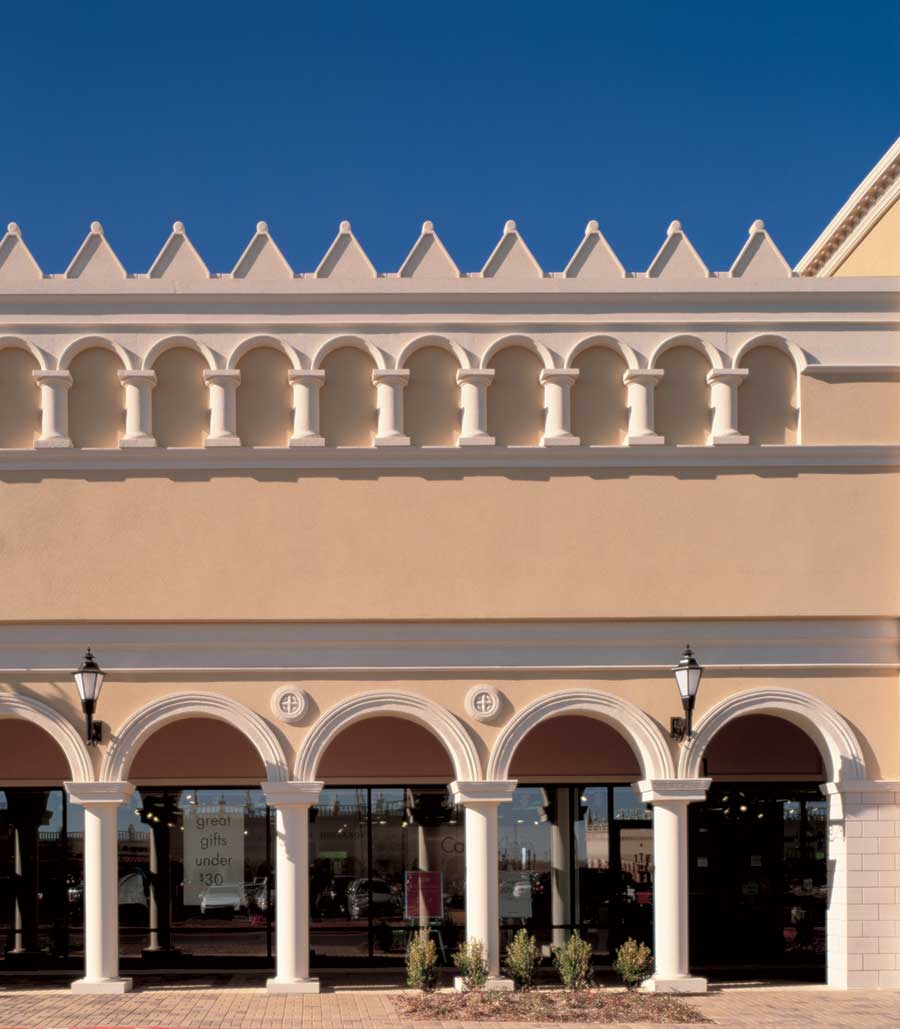
The TAFS finish on the San Marcos Mall in Texas draws visitors for hundreds of miles. Designers used Dryvit’s Tuscan Glaze on sculpted EPS foam to recreate the look and feel of old Venice.
There are, however, practical considerations for texturing. Imperfections in the base coat are difficult to hide with smooth finishes. A “worm-holed” or rilled appearance is more forgiving of blemishes, and the most forgiving are the coarse finishes that use
large aggregates.
Textured Acrylic Finishes and Insulating Concrete Forms are a great match, especially for commercial construction. TAFS complements the energy-efficiency and durability of ICF walls, and is one of the easiest and most cost-effective finishes to apply.
The wide variety of colors, textures, and looks that can be achieved with TAFS means that one of them will probably be right for your project.

